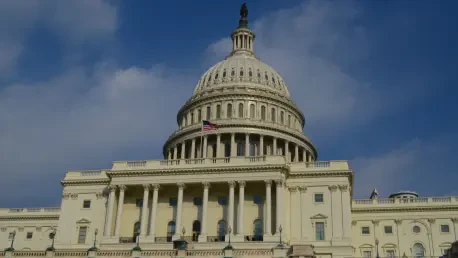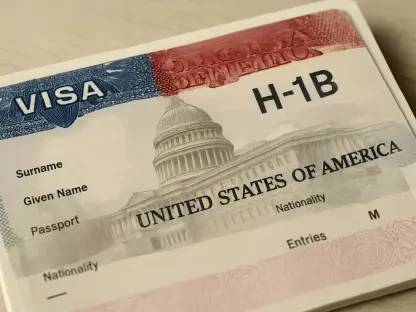In a move that could fundamentally transform the landscape of higher education in the United States, the White House has introduced a provocative new initiative under the Trump Administration, known as the “Compact for Academic Excellence in Higher Education.” This proposal targets a select group of prestigious universities, including MIT, Dartmouth, and the University of Pennsylvania, offering them unparalleled access to federal funding and benefits, but with a significant catch—strict adherence to a set of ideological and operational guidelines that align with the administration’s conservative priorities. This isn’t merely a financial arrangement; it’s a bold attempt to reshape the very fabric of university life, from admissions to campus culture. As the plan unfolds, it raises pressing questions about the balance between federal influence and institutional autonomy. Could this compact create a seismic shift in how colleges operate, or will resistance from academic communities halt its progress? The stakes are high, and the implications could reverberate across the entire educational sector.
Understanding the Compact’s Framework
Core Objectives and Targeted Institutions
The primary aim of the “Compact for Academic Excellence in Higher Education” is to steer higher education toward specific ideological and policy goals favored by the administration. By focusing on elite institutions like Vanderbilt University, Brown University, and the University of Texas, the White House seeks to leverage their cultural and academic influence to set a precedent for others. These universities are not chosen at random; their prominence ensures that any changes they adopt could ripple through the broader educational landscape. The compact’s objectives include enforcing a merit-based system that excludes identity factors in decision-making and prioritizing conservative values in campus policies. This strategic selection signals an intent to reshape higher education from the top down, using these institutions as both test cases and trendsetters. If successful, the initiative could redefine academic priorities nationwide, though it risks alienating schools outside this elite circle.
Beyond the selection of specific universities, the compact’s framework reveals a deeper ambition to address perceived imbalances in academia. The administration views these top-tier schools as environments where liberal ideologies have long dominated, often at the expense of alternative perspectives. By targeting them, the White House aims to create a counterbalance, mandating policies that protect certain viewpoints while curbing initiatives seen as contrary to its vision. This approach, however, introduces a complex dynamic—while the chosen institutions may gain financially, they face the challenge of aligning with rules that could conflict with their established missions. Smaller or less prominent colleges, meanwhile, might find themselves at a disadvantage, unable to access similar benefits or influence. The potential for a stratified system in higher education looms large, with elite schools potentially widening the gap between themselves and others under this compact’s influence.
Financial Benefits and Trade-Offs
One of the most compelling aspects of the compact is the array of financial incentives it offers to compliant universities. Access to federal student loans, research grants, contracts, and favorable tax treatments represents a significant lifeline, particularly for institutions with substantial research budgets. Additionally, a unique provision allows free tuition for students in hard science programs at universities with endowments exceeding $2 million per undergraduate. These benefits could alleviate financial pressures and enhance academic offerings, making the compact an attractive proposition on the surface. Yet, beneath these perks lies a critical trade-off: universities must conform to stringent guidelines that may clash with their core values. The promise of funding is substantial, but it comes with conditions that could reshape institutional priorities in profound ways.
The financial trade-offs extend beyond mere compliance to deeper ethical considerations for universities. Accepting the compact’s benefits means agreeing to policies that could limit diversity, restrict academic freedom, and alter campus demographics. For instance, the requirement to disclose all foreign funding introduces a layer of transparency that might deter international partnerships crucial for research and innovation. Moreover, the focus on STEM tuition waivers at wealthy institutions could divert resources from humanities or social sciences, skewing academic focus. Universities must weigh whether the short-term financial gains justify potential long-term consequences to their reputations and missions. As they grapple with this decision, the compact underscores a broader tension in higher education—how to balance fiscal sustainability with the preservation of intellectual independence in the face of federal influence.
Ideological and Operational Mandates
Shaping Campus Culture and Thought
At the heart of the compact lies a clear ideological agenda aimed at transforming campus culture. The proposal mandates the protection of conservative perspectives by requiring universities to abolish units—often interpreted as diversity, equity, and inclusion offices—that are perceived to marginalize such views. It also seeks to prohibit political demonstrations that disrupt study spaces or target individuals, potentially curbing student activism. This push raises significant concerns about academic freedom, a cornerstone of higher education. By prioritizing one ideological stance over others, the compact risks stifling the open exchange of ideas that universities are meant to foster. If implemented, these rules could alter the intellectual climate on campuses, creating environments where certain voices are amplified while others are silenced, fundamentally changing the nature of academic discourse.
Further scrutiny of the compact’s cultural mandates reveals a potential chilling effect on campus dialogue. Universities have long served as spaces where diverse perspectives clash and evolve through debate and activism. Restricting demonstrations and dismantling support structures for underrepresented groups could diminish the vibrancy of these interactions. Students and faculty might find their ability to engage in critical discussions limited, particularly on contentious social or political issues. Additionally, the focus on safeguarding specific ideologies may alienate segments of the academic community who feel their views are undervalued or suppressed. As the compact seeks to reshape campus thought, it challenges the very essence of what higher education represents—a place for unfettered exploration of ideas. The long-term impact on intellectual diversity remains a pressing question as this policy debate unfolds.
Admissions and Enrollment Restrictions
Operationally, the compact introduces rigid guidelines that could reshape how universities admit and enroll students. A key requirement is the reinstatement of standardized testing, such as the SAT or ACT, for undergraduate admissions, reversing trends toward test-optional policies. Additionally, it caps international student enrollment at 15% of the undergraduate population, with no more than 5% from any single country. These restrictions aim to return to traditional educational practices but risk narrowing access to higher education. Standardized tests often disadvantage students who excel in other areas, while limits on international students could reduce cultural diversity and harm universities’ global competitiveness. Such measures may deter top talent from abroad, diminishing the appeal of American institutions on the world stage and altering the demographic makeup of campuses.
The implications of these operational rules extend to the broader mission of higher education as a global enterprise. Universities in the United States have long attracted international students who contribute to research, innovation, and cultural exchange. Capping their numbers could strain academic collaborations and reduce revenue from international tuition, which many institutions rely on. Furthermore, mandatory standardized testing may exacerbate inequities in admissions, as not all students have equal access to preparation resources. This could disproportionately affect underrepresented groups, undermining efforts to create inclusive learning environments. As universities evaluate the compact, they must consider how these restrictions align with their goals of fostering a diverse and dynamic student body. The potential loss of global talent and accessibility raises critical questions about the future attractiveness and relevance of American higher education.
Broader Implications for Higher Education
Federal Oversight vs. Institutional Autonomy
The compact’s emphasis on federal oversight introduces a profound tension with the principle of institutional autonomy. Universities have historically operated with significant independence, shaping their missions, policies, and cultures free from excessive government interference. However, the compact’s stringent requirements—ranging from admissions criteria to ideological mandates—position the federal government as a direct influencer of academic life. This level of control could undermine the ability of institutions to uphold their unique values and respond to the needs of their communities. The balance between accepting federal benefits and maintaining self-governance is delicate, and the outcome of this dynamic could set a precedent for how much power the government wields over higher education. The risk of eroding institutional freedom looms large as universities navigate this uncharted territory.
This tension also highlights a broader philosophical debate about the role of government in education. While federal funding has always come with certain expectations, the compact’s detailed and prescriptive rules represent a significant escalation in oversight. Universities might find their decision-making processes constrained, forced to prioritize compliance over innovation or inclusivity. For instance, aligning with the compact’s ideological goals could conflict with existing commitments to diversity or academic exploration. Smaller institutions, observing this shift, may worry about future policies that extend similar controls to them without equivalent benefits. The struggle between federal influence and university independence is not just a practical issue but a fundamental question of whether higher education can remain a bastion of free thought under such structured governmental guidance. This debate will likely intensify as responses to the compact emerge.
Potential Ripple Effects Across Academia
If elite universities adopt the compact’s terms, the ripple effects could reshape the entire academic landscape. These institutions often set trends that smaller or less resourced colleges emulate, meaning changes in admissions, culture, or funding priorities could cascade downward. A two-tier system in higher education might emerge, where compact-compliant schools gain financial and operational advantages, while others struggle to compete without similar federal support. This disparity could exacerbate existing inequities, leaving regional or public universities at a disadvantage in attracting talent or securing resources. The potential for a stratified educational system raises concerns about access and opportunity, as the benefits of the compact may not be evenly distributed across the diverse array of American colleges and universities.
Moreover, the influence of the compact could extend to how higher education is perceived both domestically and internationally. If top-tier schools shift toward more restrictive policies, such as limiting international enrollment, the United States might lose its status as a premier destination for global scholars. This could impact research output and cultural exchange, key drivers of academic excellence. Additionally, smaller institutions might feel compelled to adopt similar policies to remain competitive, even if they lack the endowments or influence to negotiate with the federal government. The resulting homogenization of educational practices could diminish the rich variety of academic environments currently available. As the compact’s effects unfold, the broader academic community must grapple with how these changes might redefine the purpose and accessibility of higher education for future generations.
Strategic Context of the Proposal
Part of a Larger Reform Agenda
The “Compact for Academic Excellence in Higher Education” does not stand alone but fits into a wider pattern of educational reform pursued by the administration. A notable example is the recent suggestion that Harvard University could settle for $500 million to fund trade programs, illustrating a consistent strategy of using financial leverage to influence academic policy. This compact represents another step in a broader agenda to align higher education with specific ideological and practical goals, often rooted in conservative critiques of academia. By tying federal funding to compliance, the White House seeks to address what it perceives as systemic biases in universities, particularly elite ones. This approach underscores a belief that financial incentives—or penalties—can drive significant shifts in how institutions operate, potentially redefining the relationship between government and higher education.
This reform agenda also reflects a calculated effort to target areas of higher education seen as resistant to change. Elite universities, often viewed as bastions of progressive thought, are positioned as key battlegrounds for implementing new priorities. The compact’s focus on issues like diversity initiatives and campus activism suggests an intent to dismantle structures perceived as contrary to the administration’s vision. Beyond immediate policy changes, this strategy aims to influence public perception of higher education, framing it as an area in need of correction through federal intervention. The use of financial tools to achieve these ends highlights a pragmatic, if controversial, method of reform. As this broader agenda unfolds, it will likely continue to spark debates about the appropriate scope of government involvement in shaping academic institutions and their missions.
Uncertain Reception and Future Outlook
As the compact rolls out, the response from targeted universities remains a critical unknown. These institutions, known for their independence and academic rigor, face a complex decision—whether to accept the financial benefits at the cost of aligning with the compact’s mandates. The absence of immediate public feedback from schools like the University of Southern California or the University of Arizona leaves the initiative’s future uncertain. Resistance could emerge if universities perceive the rules as an overreach that threatens their core principles. Alternatively, some might engage in negotiations to modify terms, seeking a middle ground that preserves autonomy while securing funding. The outcome of these deliberations will shape not only the compact’s viability but also the precedent it sets for federal influence over higher education in the years ahead.
Looking forward, the compact’s trajectory hinges on broader stakeholder reactions and potential legal or public challenges. Faculty, students, and alumni of the targeted universities may push back against policies seen as restrictive or ideologically driven, amplifying the debate. Additionally, the compact could face scrutiny from lawmakers or advocacy groups concerned about its impact on diversity and academic freedom. If even a few elite institutions adopt the terms, it might embolden the administration to expand the initiative to other schools, further centralizing control over educational policy. Conversely, widespread rejection could force a reevaluation of the approach, prompting alternative strategies to achieve reform. As discussions progress, the compact stands as a pivotal test of how far federal authority can extend into the realm of higher education without sacrificing the independent spirit that defines it.









